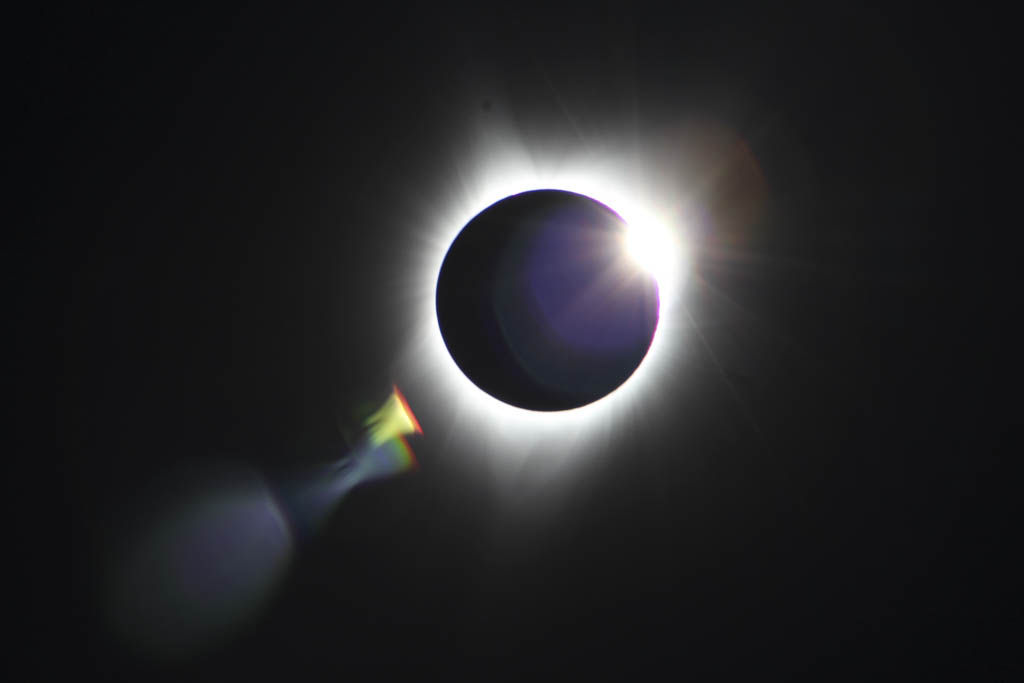Jennifer Amato, Managing Editor
The self-proclaimed “science geek” began specializing in black and white photos and doing his own printwork in the late 1980s. He then decided to spend his 62nd birthday this year watching the eclipse out West because he was captivated by Oregon while vacationing there two years ago.
He watched the eclipse in 1998 and said he “waited 19 years for this.”
“After it’s there, your eyes almost well with tears because you realize you’re standing in the shadow of a rare celestial body: the moon,” Funk said.
He said the experience was amazing, though a three-hour trip after the eclipse took him 11 hours to travel. He said it were as if 10 Woodstocks were happening at the same time from coast to coast. However, he chose to stay south of the town of Madras to avoid the thousands of people expected to show; there were only about 10 people where he was viewing the sky.
He credits the success of his photographic images of the eclipse to Fred Espenak, known as Mr. Eclipse, whom he corresponded with about how to capture the perfect photo. The setting Funk used was ISO-100 at f/8. The first exposure was 1/1000 of a second; each succeeding exposure was three clicks of the menu wheel to capture all of the features of totality.
“I thought I was going to get a good picture. I didn’t think I was going to get fantastic pictures,” he said. “There’s no going back. You gotta get it right the first time.”
His next goal is to watch the eclipse scheduled for April 8, 2024. He said he plans to retire to North Carolina but will drive to Texas because the state is known for its clear skies.
Contact Jennifer Amato at [email protected].

